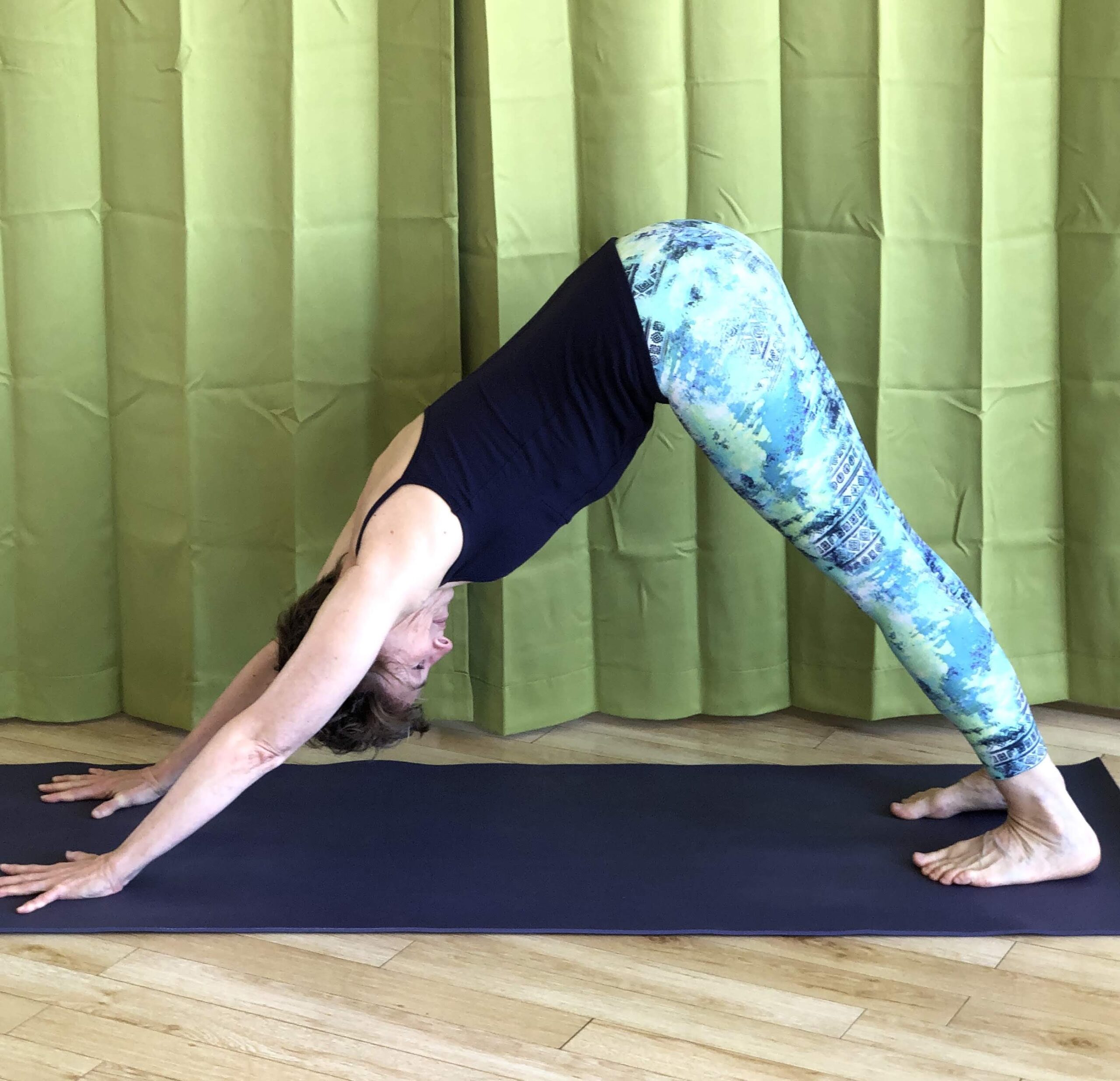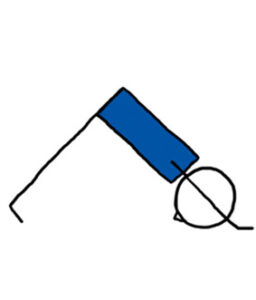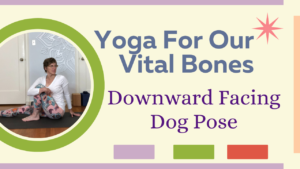
18 Aug Is downward facing dog pose ok for our bones?
In my yoga classes we’ve been talking about forward folds as bowing rather than hinging. This is a subtle difference from a mechanical standpoint but, once you tease this out with practice, it’s a profound way to engage the spine in a meaningful way, which strengthens it over time.
In the lineage of yoga called Viniyoga, the postures are approached mostly from the perspective of the spine. In my yoga therapist studies, which are based in this lineage, I really appreciate how this brings more attention to the care and approach to practicing the postures that seem the most problematic for those of us with low bone density.
Forward folds, for instance, are approached more as a “bow” than a “hinge at the hips.” The functional result is the same – both avoid rounding the upper spine. But a hinge bypasses the spine altogether. A bow engages the breath – particularly the exhale – to support the base of the spine as we involve the whole torso and core in a meaningful, functional way.
I used to cue forward folds as a hip hinge (and, to be honest, still do sometimes out of habit) but now I see the error of that in how we skirt the use of our spine, generally more out of fear than any real mechanical, structural deficit. And ultimately this can do more disservice to the strengthening of our vertebrae and musculature from disuse rather than misuse from not having more of the body participate as it should. (If you’ve practiced with me a while you know I’m a big proponent of learning how your whole body participates in your yoga practice – AND getting to know your own body’s capabilities well to vary postures accordingly.)
I try to express these forward folding movements more as bows now. Still safe for our bones. In fact, it has a strengthening effect on our spine.
And I realize this goes against most of the advice we hear from physical therapists about hinging.
This is a yogic approach, which employs not just the body, but includes the mind and breath as well.
Hint: It’s all about the exhale!
From a yoga perspective, forward folds – whether standing or seated – are engaged on the exhale, this is very important because then it utilizes and stabilizes the core. Plus, exhales have an overall calming effect on our system (think how it feels when you sigh), which provides physiological benefits to our bones.
Today, let’s consider downward facing dog.

Downdog is essentially a standing forward fold – with an added weight bearing element of the arms!
As we know, bearing weight, i.e. our body weight, against gravity is a necessary force to stimulating our bone cell remodeling that refreshes and rebuilds our skeleton.
The image of downdog above shows the general gist of the shape of the posture.
From an osteoporosis standpoint, there is nothing inherently dangerous with doing this posture; in fact, there are many positives for the spine and from a weight-bearing aspect for the arms and wrists.
But, depending on a whole host of other things going on with your unique body, this may or may not be accessible or even appropriate for you to do.
For instance, if you have glaucoma, uncontrollable high blood pressure, detached retina, recovering from a concussion, or are dealing with any other condition where you should avoid adding pressure to the head from being upside down, this pose is not for you.
For many of us, though this is perfectly fine to practice and yet will still require us to make some accommodations to address our strength, flexibility, and range of joint motion throughout our body to find a balance between bearing weight in the arms and keeping weight in the legs.
There are many little nuances you can play with to make it a comfortable pose for you. For example, you may need to bend your knees to address tight hamstrings, or turn your fingers out or in to engage the shoulders properly.
Practicing this pose like any other, takes practice and builds strength, flexibility, self-awareness and proprioception, reducing our fracture risk.
Explore with me how to practice downward facing dog pose and more.
You can practice with me live or get my class recordings in the Vital Bones Community Library. Sign up to practice this class:





Marya
Posted at 23:51h, 26 JulyLove this perspective. Thank you.
Mary Beth Ray
Posted at 17:02h, 20 AugustGreat! thank you Marya!
Louise Carter
Posted at 17:55h, 31 JulyGreat article. Thank you. I would enjoy practicing the difference between hinging and bowing in a class, if possible.
Mary Beth Ray
Posted at 17:01h, 20 AugustThank you for your comment, Louise! Yes we will be circling back to this in the live classes soon.